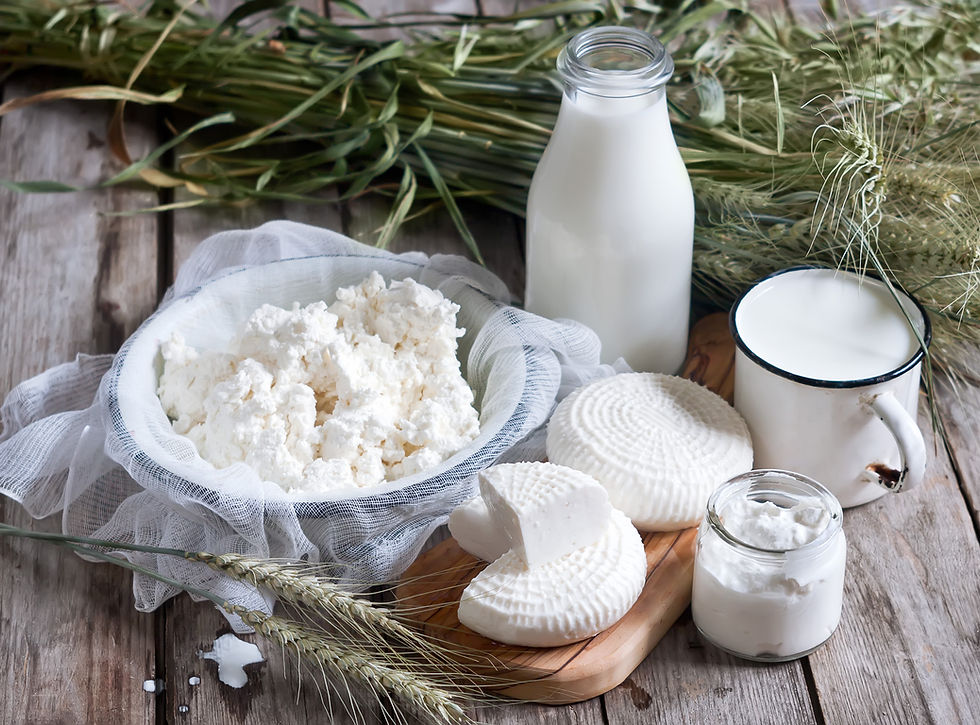Q & A : Ricotta Cheese and Kidney Disease
- Brandy Winfree Root, RDN, CSR, LDN

- May 29, 2024
- 2 min read
This series is going to focus on answering your questions as clearly and concisely as possible. So, let’s dig into our question for today.

The Question:
“Is ricotta cheese ok for someone with kidney disease?”
My Answer:
Maybe.
It really depends on how you're using it.
Ricotta Cheese and Kidney Disease
One ¼ cup (62g) serving of ricotta cheese has about 4 g of protein, 65 mg of sodium, 107 mg of phosphorus, and 110mg of potassium.
Let's talk about how all of that works within a renal or kidney diet.
Protein
For someone with CKD who is generally adhering to a low protein diet, 4g of protein from ¼ cup of cheese is not going to cause problems for most.
Sodium
The FDA requires that any food item have 140 mg of sodium or less per serving to be labeled as “Low Sodium”. Believe it or not, one serving of ricotta cheese is actually going to count as a “low sodium” food.
Phosphorus
Per KDIGO guidelines, phosphorus only needs to be limited if your phosphorus labs are trending up. Though I generally recommend limiting phosphorus from additives early on in kidney disease — you can read more about that here.
Recent research tells us that phosphorus from animal products, like ricotta cheese, will only be absorbed at about 40-60%. That means that one can expect to absorb at or below 60mg of phosphorus from one serving. Truly, that's not bad.
Potassium
While some dairy can be high in potassium (more than 200 mg per serving), one serving of ricotta shouldn’t cause problems for most people restricting their potassium since it comes in at just 110mg per serving.
How Are You Cooking with Ricotta?
I have never met a person who eats ricotta alone. I’m sure that person exists, but I have yet to meet them.
Because it’s typically incorporated into a dish, you want to make sure that you’re considering the dish as a whole. If you’re using 2 cups of ricotta for your Grandma’s lasagna, remember that red sauce and ground beef or veal are also high potassium foods. So, even though ricotta isn’t high in potassium on its own. It could contribute to an elevated potassium if paired with other high potassium foods.
Especially if you struggle to limit yourself to just one piece of Grandma's lasagna.
Moderation
I know that you noticed the phrase “per serving” appearing over and over again in this post. That’s because it’s the big thing that I want you to take away from it.
You know you better than I do. So, if you think that you can limit yourself to ¼ cup of ricotta cheese in a meal — perhaps in a mini cannoli — then I say great!
But, if you don’t think that you can do that then it’s probably a good idea to avoid it altogether.
As with most foods, if enjoyed in moderation, ricotta cheese can be part of a kidney-friendly diet. You just have to be realistic about how you’re going to eat it and what you’re going to eat it with.
And if you have any questions about what will work for you, reach out to your provider or dietitian to learn more about your labs and what dietary changes would best suit you.



thank you for the information on Ricarda cheese. I’m glad I found your site on my phone.